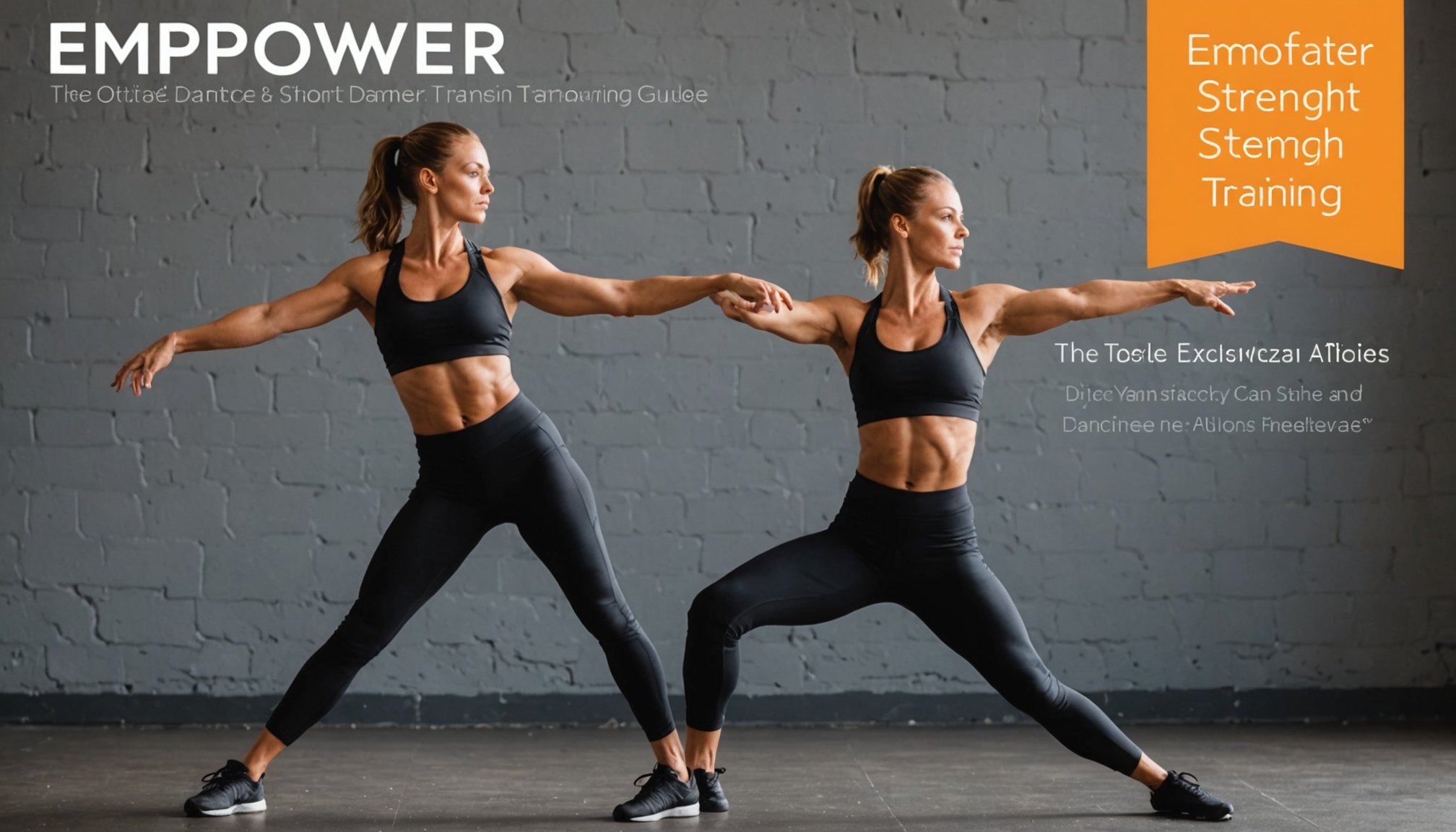Importance of Strength Training for Dancers
In the world of dance, every move tells a story. But to perform these movements with grace and precision, dancers must develop their physical strength. Strength training benefits dancers by enhancing their muscular power, which directly impacts their dance performance. When muscles are conditioned, dancers achieve greater agility and fluidity in their movements, allowing them to execute complex choreography with ease.
A pivotal aspect of strength training is its role in injury prevention. By strengthening the muscles, dancers reinforce their joints and improve overall body stability. This reduces the risk of sprains, strains, and other dance-related injuries. A well-conditioned body can withstand the demands of intense rehearsals and performances, keeping dancers on their feet and performing at their best.
Also to read : Elevate your golf performance: the definitive strength training blueprint for hitting longer drives
Moreover, incorporating strength training into a dancer’s routine offers long-term benefits. It not only boosts performance and prevents injuries, but also contributes to sustained physical health as the dancer matures. Stronger bones, improved posture, and enhanced endurance are just a few advantages that accompany a dedicated strength training regimen. For dancers, this could mean a longer, more successful career on stage.
Therefore, dancers should thoughtfully integrate strength workouts into their schedules, balancing this with creativity and practice.
Also to discover : Conquering marathon pace: proven techniques for optimal energy control on race day
Effective Strength Training Techniques
Strength training techniques are pivotal for dancers, enhancing performance and reducing injury risk. One principal technique is muscle engagement, vital in executing movements with precision and control. Proper engagement ensures that specific muscles, essential for dance, are activated during exercises for optimal strength gains.
Dancer-specific exercises cater to the unique demands of different dance styles. For instance, core strength is crucial for both ballet and hip-hop styles. A popular exercise is the plank, which enhances abdominal and back strength, supporting a dancer’s posture and balance. Variations like side planks can target oblique muscles, further stabilizing the dancer’s core.
Utilising strength training techniques with correct form is essential. Proper posture during exercises, such as maintaining a neutral spine in lunges or squats, prevents injury and ensures the muscle groups intended to be worked are effectively targeted. It’s advisable to start with low weights or resistance levels, focusing on perfecting movements before increasing intensity. This method not only aids in building strength but also fosters muscle engagement best suited for dance.
Incorporating strength training techniques systematically prepares dancers by enhancing muscular endurance, supporting the rigorous demands of performance. Through targeted exercises, dancers can achieve improved balance, control, and overall technique.
Customized Strength Training Programs
Personalized training programs are essential for dancers aiming to excel at their craft. These programs cater to various skill levels, including beginners, intermediates, and advanced dancers. In addition, they offer flexibility for dance styles adaptability, ensuring each dancer gets the most out of their training.
Beginner Training Program
Beginners benefit from a structured training for various skill levels approach focused on foundational exercises. Essential workouts include pliés, tendus, and core strengthening exercises, performed consistently. The recommended frequency stands at 2-3 sessions weekly, lasting 45 minutes each. Gradually incorporating these practices, novices can build a solid base for future improvement.
Intermediate Training Program
For those at the intermediate stage, emphasis shifts to more complex techniques that demand increased strength and endurance. Progression involves adding resistance through weights or bands to standard movements. This intensifies workouts, offering an opportunity for improvement. An effective strategy is to gradually increase repetitions and sets, enhancing performance and longevity in dance.
Advanced Training Program
Advanced strategies cater to experienced dancers seeking to elevate their skills further. Focus on cross-training through disciplines such as Pilates or yoga promotes increased strength and flexibility. These methods refine dance-specific muscles and prevent burnout. Integrating diversified techniques ensures dancers remain adaptable and responsive to various style demands.
Safety Tips for Strength Training
Engaging in strength training can significantly enhance a dancer’s performance, yet it must be approached with care to ensure safety in exercise. Adhering to specific guidelines for injury prevention can safeguard against common pitfalls. This involves tailoring your workout to accommodate unique physical demands and prioritising a comprehensive warm-up and cool-down routine.
A proper warm-up is crucial as it prepares the body, increases blood flow to the muscles, and reduces the risk of injuries. Activities like light cardio, dynamic stretches, or mobility exercises can serve as effective warm-up methods. Conversely, cool-down routines mark the transition from high to low activity levels, allowing the body to return to a resting state. Stretching and deep-breathing exercises are beneficial in aiding recovery and preventing muscle soreness.
Furthermore, understanding and recognising body signals is pivotal. Listening to your body can help avoid overtraining, which might lead to fatigue or more severe injuries. It’s important to look out for persistent discomfort or pain, as continuing exercise despite these warnings might aggravate issues.
In summary, by incorporating robust safety measures, including warm-ups, cool-downs, and attentive body listening, dancers can enjoy the benefits of strength training while minimising the risks of injury.
Injury Prevention Strategies
In the world of dance, injury prevention is paramount for maintaining a fruitful career. While enthusiasm and practice are crucial, preventing dance injuries requires a deeper understanding of the body’s needs and limitations. Dancers often encounter common injuries such as sprains, strains, and stress fractures. Ensuring these injuries are avoided necessitates a thorough strength training regime. Strength training can fortify muscles, tendons, and ligaments, making dancers less prone to these typical ailments.
An essential part of recovery protocols is integrating strength training into rehabilitation. This approach not only focuses on regaining lost strength but also on preventing the recurrence of injuries. For instance, exercises targeting the core and lower extremities can significantly aid in the recovery process, allowing dancers to return to their routines with improved stability and balance.
Physical therapy insights offer invaluable perspectives for maintaining dancer health. Therapists emphasize the importance of personalized exercise programs. These programs, tailored to fit individual needs, are critical for cultivating resilience and flexibility. Therapists may also recommend cross-training with low-impact activities such as swimming to enhance cardiovascular health without the risk of overuse injuries.
Implementing these comprehensive strategies ensures that dancers can pursue their passion with less risk of injury, enabling longer, successful careers on the stage.
Testimonials and Success Stories
Exploring the power of inspirational stories and real-life transformations, we dive into the profound effects of strength training on dancers.
Case Study: Professional Dancer
A professional dancer embarked on a strength training success journey, driven by the need to enhance performance and prevent injuries. Initially, the dancer faced challenges in balancing flexibility and strength. However, the structured strength training program resulted in noticeable improvements. Virtually defined muscles and enhanced endurance replaced previous weaknesses. Over time, the dancer reported performing complex routines with increased confidence and reduced fatigue. This tangible transformation affirmed the dancer’s commitment, underscoring the essential role of strength in professional dancing.
Feedback from Dance Instructors
Dance instructors have observed significant changes in their students’ performances following strength training programs. They note that students exhibit improved posture, stability, and agility during dance routines. Instructors highly recommend incorporating strength training into regular practice, recognising benefits like enhanced control in movements and reduced injury risk. Their experiences underline the interconnectivity between strength and dance excellence.
Community Success
Strength training has united dancers from various backgrounds, forming a community enriched with dancer experiences. Testimonials reveal enhanced motivation, as participants share their successes and learn from others. These stories inspire continued dedication, reaffirming the transformative power of strength training across all skill levels. Enthusiasm suggested through shared experiences encourages new participants to engage in strength training, fostering a supportive environment.











